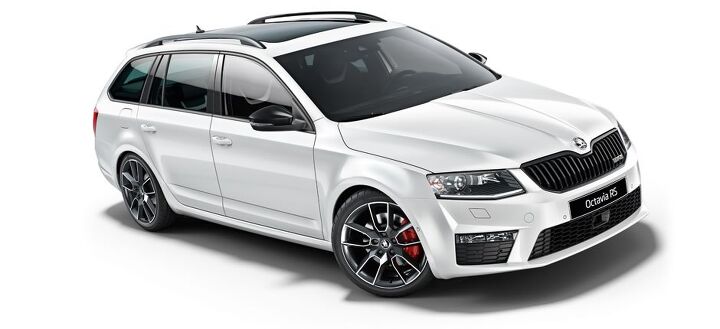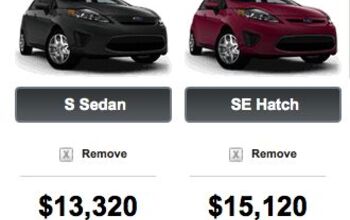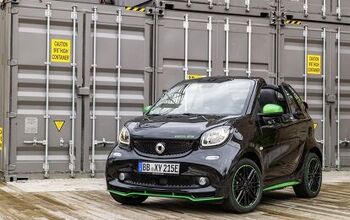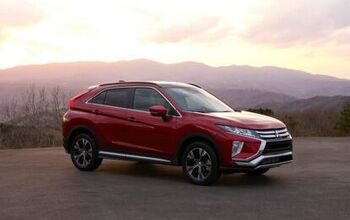Koda in America: Does It Make Sense?
There’s been much talk lately about the possibility of Czech automaker Škoda entering the American market, spurred by news of the brand trademarking some model names in the USA.
The idea is that Škoda could complement or even replace Volkswagen on American soil with its larger, cheaper cars. But can it make sense? Can Škoda offer something that VW can’t? Is it better suited to American tastes? And, is it cheap enough? Let’s look at all these question with the eyes of someone who’s familiar both with Škodas and with American cars and consumer tastes.
At first glance, importing Škodas to the North America is the smart thing to do. In a way, they are the same thing as Volkswagen’s U.S. cars — they’re a bit bigger than their German counterparts, a little bit cheaper and somewhat de-contented to make the previous trait possible. While VW USA has its Jetta, Škoda has Golf-based Octavia. The American Passat has its counterpart in the Superb. The Czech cars are almost identical to the German ones in technology and mechanicals — they use the same platforms, same infotainment systems, the same parts bin.
The deeper you look, though, the harder it is to make case for Škodas being sold in the USA. I’ve driven them all, and I know enough about American tastes and the market to see some problems in the whole venture. While I won’t say that it’s impossible, here are some problems that have to be solved before Jalopnik readers can start buying the diesel manual wagons from Czech Republic they always dreamed about.
First of all, it seems that there’s a lot of misconception in America about Škoda’s pricing and market position. It works two ways, and both are wrong for the brand’s success. First, the Škoda has the image of a “cheap” VW brand. If anyone in the USA knows it exists, he usually expects it to compete with Dacia or something. And while the number of people who already know about Škoda’s existence is negligible, it’s very likely that if the brand is to come to the US market, the first news coverage will be along these lines: “Volkswagen’s cheap brand.”
That’s bad for brand image, of course. Especially when you consider the fact that while Škoda really is, together with Seat, VW’s “cheap brand”, it’s because Volkswagen itself is moving up-market and is now wandering into the murky “sub-premium” class. This leaves Škoda (and, to some extent, Seat) to compete with the likes of Opel, Peugeot, Renault, Hyundai or even Ford. And the pricing reflects that. Škodas usually are only marginally cheaper than VW’s — for example, the base Superb costs (on the German market) about $1,000 less than the base Passat.
In most markets around the world, this is no real hurdle. While VW takes on the role of “sub-premium” German brand, Škoda aims at the “value-for-money” segment, in a similar way Volvo did decades ago (before it became semi-premium itself). Instead of being significantly cheaper, it offers basically the same cars, but with slightly cheaper materials, which are made up for not in price, but in size.
For the price of the Golf, or slightly below, you get the Octavia, which is a lot like a more sophisticated Jetta. It’s got the same chassis, same engines and the same technology as the Golf, but it’s bigger and more practical. The same can be said about the Superb, and while in Fabia the difference from the Polo is much less apparent, it still offers the Combi version.
One way to look at the difference is that Škodas do for emerging markets what VWs do for Western Europe. In Czechia or Poland, the Fabia fulfills the same role as Golf does in Germany or UK. Octavia is based on Golf, but serves the role of “basic executive sedan”, like the Passat, in richer countries. The Superb is, in many ways, a poor man’s Phaeton. It was even designed with the intention of being used as chauffeured car. I’d even go as far as saying that the Octavia vRS is a working man’s Audi S4.
By now, you can probably see the problem. Škodas are, in fact, much closer to German VWs than American VWs are, both price-wise and technology-wise. Especially in the case of the Superb versus US Passat, the Czech car would compete directly with the Passat. Octavia would be in slightly better position, offering a large alternative to the Golf at the same cost (and probably killing the Jetta in the process, as it did in Europe),though there are a few cars that could genuinely work stateside. Like Rapid, which offers Golf-like space with low-tech solutions for the price of Fabia (a subcompact), thus being a perfect competitor for cars like Mitsubishi Lancer, or the Yeti, a funky little off-roader that could go head-to-head with Kia Soul or Jeep Renegade.
Without sorting out the situation in bread-and-butter market segments — like midsize sedans — Škoda’s American venture can never work. So, what to do about it? Decontenting is not really an option — with Škoda already building cheaper alternatives to VW on the same tech, there’s not much space for savings. Base Škodas, designed to create nice “starting at” prices, are already pretty cheaply made, as are the basic European VWs.
The cars most people buy are much more expensive, with nicer trim and a lot of technology. A top-of-the-line Superb would probably cost close to $40,000 U.S., and a typical one would be close to 30 grand. That’s Camry or Fusion money.
So, it looks that there’s only one solution to the VW’s American conundrum — and it’s the one they would probably have been the best from the beginning. If Škoda is to enter American market, it will mean the end of the Americanized Volkswagens as we know them. The only path for VW in America is to go up, import the true German models and stop trying to be an American brand. Passat can never beat the Camry in its own game, and should stop trying. The Euro Passat can be a great alternative to Acura or Lexus, with its nicely made interior and state-of-the-art tech. The American Passat needs to die, along with the Jetta. Those who want a German car want it really German, not Americanized.
This move upmarket would make room for a Ford, Toyota or Mazda competitor underneath, and that’s where Škoda can fit in. The literal billion-dollar question is whether such a move is feasible in the current environment. Will Americans pay nearly BMW money for Volkswagens? Will they pay Volkswagen money for cars made somewhere in Soviet Russia? Is VW willing to spend hundreds of millions to find out?
[Image: Škoda Auto]
More by Vojta Dobe
Latest Car Reviews
Read moreLatest Product Reviews
Read moreRecent Comments
- Doug brockman There will be many many people living in apartments without dedicated charging facilities in future who will need personal vehicles to get to work and school and for whom mass transit will be an annoying inconvenience
- Jeff Self driving cars are not ready for prime time.
- Lichtronamo Watch as the non-us based automakers shift more production to Mexico in the future.
- 28-Cars-Later " Electrek recently dug around in Tesla’s online parts catalog and found that the windshield costs a whopping $1,900 to replace.To be fair, that’s around what a Mercedes S-Class or Rivian windshield costs, but the Tesla’s glass is unique because of its shape. It’s also worth noting that most insurance plans have glass replacement options that can make the repair a low- or zero-cost issue. "Now I understand why my insurance is so high despite no claims for years and about 7,500 annual miles between three cars.
- AMcA My theory is that that when the Big 3 gave away the store to the UAW in the last contract, there was a side deal in which the UAW promised to go after the non-organized transplant plants. Even the UAW understands that if the wage differential gets too high it's gonna kill the golden goose.


































Comments
Join the conversation
I had a great argument on this subject last week with a buddy. My take is that if Skoda is coming here it is to do battle with Subaru. 1. VW just invested in putting their awd supplier in both of its us focused manufacturing points. 2. Their new architecture is now in both factories and is debuting their awd push in a cuv and car. 3. They are about to launch two north America specific suv's and they have no brand mates here with which to share these vehicles (sure, audi on the q3/tiguan but that's not enough, and do they even want the long wheelbase version?). I think launching Skoda with a uv heavy lineup and awd as a forced option on everything could absolutely work. I don't really see the point otherwise. I don't think the long term plan would rely on skoda's existing lineup out of eastern europe, but rather would be focused on getting more volume out of vw's spendy new factory expansions. The point in the article that vw should stop trying to out camry Toyota in the us is just wrong. By introducing Skoda they would be doubling down on that strategy, and it is the right one sales wise.
SEATs look better -- besting VW-equivalent models in looks. I could see SEATs selling here better than Škodas. It could tap into the large Hispanic market, too.